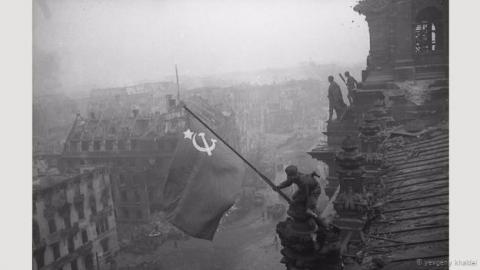Altered images
“I think photojournalism is going through a crisis of credibility because there’s so much altering going on, it’s almost becoming accepted now,” he tells BBC Culture. “I was a photojournalist for 25 years and it’s incredibly damaging to what’s left of our profession.” Kamber has covered a dozen conflicts in places such as Iraq, Afghanistan and Somalia, and witnessed colleagues and friends putting their lives on the line to capture events. “If you look at Martin Adler or Tim Hetherington, these are folks who risked their lives and gave their lives to bring home to the public the reality of what was happening out there. There are some photographers today defacing that tradition and I find it disrespectful.”
He believes there are a number of reasons why image tampering is on the rise, among them the revolution in technology. “When I was growing up, to manipulate a negative was extraordinarily difficult. Kids today are growing up thoroughly immersed in this digital age. They grow up changing things, moving objects around – in photos, video games and films. So their brains are oriented to possibilities that I didn’t even know about.” It’s also due to financial pressures. “As newspapers and publications lay off professional staffers and cut their rates, they’re hiring freelancers with very little training. They’re hiring young freelancers who are underpaid and undertrained.”
Point and shoot
Of course, image altering is nothing new. The exhibition features photos from more than 150 years ago, including what is seen as the forerunner of photojournalism, Roger Fenton’s Valley of the Shadow of Death. Taken during the Crimean War in 1855, it shows cannonballs scattered across a battlefield – but another photo taken by Fenton earlier on the same day shows the cannonballs collected in a ditch, meaning they were moved to stage the image. When describing the picture in her 2003 book Regarding the Pain of Others, Susan Sontag wrote: “Not surprisingly many of the canonical images of early war photography turn out to have been staged, or to have had their subjects tampered with.”
Another image is the shot of Red Army soldiers raising a flag above the German parliament in May 1945. Taken by Soviet Army photographer Yevgeny Khaldei, it appears to capture a spontaneous moment that came to symbolise Soviet triumph over Nazi Germany. Yet it was carefully planned: Khaldei had a tablecloth sewn onto a large flag and flew from Moscow to Berlin with the aim of recreating the iconic image of US marines raising a flag on Iwo Jima. He posed the soldiers on the roof of the Reichstag, later scratching out the wristwatches they wore (which were proof of Soviet looting) and adding columns of dark smoke.
One of the best-known images of warfare, Robert Capa’s Falling Soldier, has also been contested. Although no one knows whether it was faked, Kamber has his doubts. “I believe the Falling Soldier photo is staged – I photographed combat for many years, and never photographed anyone at the moment of death – Capa has two pictures on the same roll of film at the moment of death… I think the chances of that being real are astronomical.”
Yet he argues that photographers like Capa were operating in different conditions, before a code of photographic ethics emerged. “In Capa’s defence, he was working at a time when there were no set standards in photojournalism… He wasn’t breaking any standards because there were no standards. His professionalism as he moved forward did help to create the standards of modern photojournalism, and we have to credit him with that.”
Kamber decided to mount this exhibition after controversy surrounding this year’s World Press Photo competition, in which a fifth of the finalists were disqualified for manipulating their images. One winner was stripped of his prize after it emerged that he had misrepresented the location of one of his images, prompting World Press to organise an ‘ethics symposium’ in New York later in 2015 (just 8 per cent were disqualified in the final rounds of the previous year’s contest).
The chairman of the British Press Photographers’ Association, Jeff Moore, said that World Press Photo should be a celebration of news, sports and editorial photography, “and not clever post-production”. Kamber believes that restoring credibility to photojournalism is “in the hands of editors, and of contests”. In the past two years, World Press Photo organisers have requested that finalists submit unprocessed files. According to managing director Lars Boering: “We… used to be about ‘trust’ – but eventually we had to become police. Once we started checking the files we found a lot of things. When the technicians were standing there and showing us what they found, we were shocked. Truly shocked.”
Fiona Macdonald

